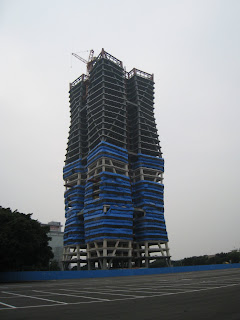Side Note: I got distracted and forgot to post yesterday. So let’s just pretend that it’s Friday today, hm?
--
I talked about structure a while ago. Structure should never be used to develop a story, but it can be used for a good purpose. Particularly if you are stuck with a scene or a sequence, structure can be a huge help to figure out what’s wrong. I learned this from David Baboulene’s book, the Story Book, so if you want to know about structure, story or subtext, visit his blog or buy his book.
Baboulene says somewhere that every story is basically the classic three act structure – a small beginning, act one, the long middle, act two and the short end, act three. No matter what structure you used, the three act structure will probably apply. Structure goes even deeper. Every act in your story will also have a three act structure. Each of those acts has a three act structure. Every scene has a three act structure. You can literally break every piece of your story into three pieces, the build-up to the problem, the conflict and complication of the problem, and the resolution, win or lose.
When you take this into account, each scene (and story, and sequence etc.) should have a protagonist (for that specific part; thus the person who has the most to lose in that particular part), and he should want something, and something should stand in his way. Then he attempts to overcome this and he either wins or loses.
I find this breakdown of things into buildable blocks very useful because it allows you to take a scene (or story or sequence) apart and figure out which part isn’t working. When you work with a small part, finding the problem is much easier.


No comments:
Post a Comment